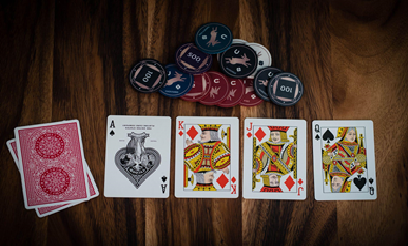Are you a poker player looking for an edge? Have you ever wondered why some players seem to have the perfect bluff every time? The answer may lie in psychology. poker is a game of strategy and luck, but a psychological component can make all the difference between winning and losing.

This guide will explore what goes into creating a successful bluff and provide tips on reading your opponents’ tells so that you can maximize your chances of success at the table. Ready to get started? Let’s dive in!
Understanding the Psychology of Bluffing
As you probably already know, bluffing is essential to juegos de póker. It involves making a bet or raising with a weak hand to make opponents think you have something better than you do. It’s not just about the money but about psychology. When you bluff, you’re trying to manipulate your opponents by making them believe you have a strong hand when you don’t.
The psychology of bluffing is all about reading your opponent, being aware of their tells, and understanding how they think. To get ahead at the table, it’s important to recognize the nuances of their betting patterns and reaction times. When you can accurately read your opponents, it gives you an advantage when deciding whether or not to call a bluff.
The Benefits and Risks of Bluffing
Bluffing can be a powerful tool for winning at poker, but it also involves risks. If you make too many bluffs, your opponents may begin to suspect your intentions and become wary of your calls. Additionally, if you’re too obvious in your bluffs, it could backfire against you. To reduce the risk, it’s important to be aware of the other players and their tendencies.
It’s also important to understand that bluffing should only be used as a last resort. If you have a strong hand, it is usually better to play it aggressively than to try and bluff your way through the game. Think carefully before moving, and ensure it’s right for the situation.

Analyzing Your Opponent’s Betting Patterns
To successfully bluff your opponents, you need to be able to read their betting patterns and reactions. Pay attention to how often they raise or fold when the stakes are high and how quickly they make decisions. For example, if they’re usually hesitant to raise when the stakes are high but quickly fold when you bet big, then you can use this to your advantage.
You also want to be aware of any tells indicating whether or not your opponents have a good hand. This can include physical cues like sweating, shaking, or yawning. These are all signs that your opponent may feel anxious or uncertain and be bluffing.
Do they usually bet aggressively? Or do they tend to be more conservative with their bets? If you can determine their tendencies, you can anticipate their moves and use that information to your advantage.
Reacting to Your Opponent’s Bluffs
Once you’ve identified an opponent’s tell, using it to your advantage is important. Call their bet or raise it if you recognize a tell indicating they may be bluffing. This will let them know that you’re onto their bluff and force them to fold if they don’t have a strong hand.
It’s also crucial to remember that not all bluffs are created equal. Some opponents may be more likely to bluff than others, so you should consider this when deciding whether or not to call a bluff. It may be worth taking the risk and calling their bet if you’re confident they’re bluffing.

Crafting a Winning Strategy with Bluffs
Bluffing can be a powerful tool for winning at poker, but it also requires strategy. You need to know when it’s best to bluff and when it’s not worth the risk. Analyzing your opponent’s betting patterns, recognizing their tells, and reacting accordingly are all essential skills for mastering the psychology of bluffing.
Another key factor to consider is the stakes. You may want to be more aggressive with smaller stakes, while larger stakes require more careful consideration. The right balance of aggression and caution is essential for a successful bluffing strategy.
Overcoming Fear and Anxiety When You’re Ready to Bluff
The psychology of bluffing can be intimidating if you’re not used to it. But with the right strategy and understanding of your opponents, it doesn’t have to be. The key is recognizing when a bluff is beneficial and when it could backfire against you.
Remember to stay focused and confident when you are ready to leap and take the risk of bluffing. The more comfortable you are with your strategy, the less anxious you’ll be during the game.
Wrapping Up
Knowing when and how to bluff is an important skill that can help you win at poker. With practice and experience, you can refine your bluffing techniques and master the psychology of bluffing. Ready to try your luck? Check out GGPoker! They offer a great platform for learning the ins and outs of bluffing. Good luck!
